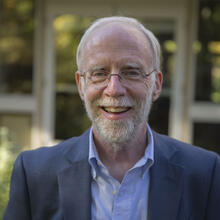Cambridge, MA. For much of the past week, I was puzzling over the Gospel for this third Sunday of Lent, the scene in John 2 where Jesus drives the merchants and money-changers out of the temple:
The Passover of the Jews was near, and Jesus went up to Jerusalem. In the temple he found people selling cattle, sheep, and doves, and the money-changers seated at their tables. Making a whip of cords, he drove all of them out of the temple, both the sheep and the cattle. He also poured out the coins of the money-changers and overturned their tables. He told those who were selling the doves, ‘Take these things out of here! Stop making my Father’s house a market-place!’ His disciples remembered that it was written, ‘Zeal for your house will consume me.’ (Psalm 69) (2:13-17)
The first puzzle: why this Gospel on the Third Sunday of Lent (B)? This is resolved, I think, by noticing the two things John does here.
First, he takes the account from where we find it in Mark, Matthew, and Luke — just after the triumphal arrival in Jerusalem, such that in going to the temple Jesus is with authority taking possession of his Father’s house — and places it near the beginning of his Gospel. Most tellingly, it now follows upon the scene in Cana, where in his first sign Jesus turns water into wine, that they may enjoy the wedding feast to the full. It may seem a harsh and clumsy transition, from the wedding to the harsh cleaning out of the temple. But it is not so, in John’s mind: both are scenes of transformation: water becomes wine, a good human event the manifestation of divine presence. His sign is in the transformation that takes place, first in the water-made-wine, and now in the temple-made-house-of-God.
In the temple, Jesus is striving to change the material, piecemeal transactions of exchange, the buying and selling on the border between the profane and sacred precincts, into a purer, simpler realization: this is God’s house.
Second, John drives this point home by the argument that ensues:
The Jews then said to him, ‘What sign can you show us for doing this?’ Jesus answered them, ‘Destroy this temple, and in three days I will raise it up.’ The Jews then said, ‘This temple has been under construction for forty-six years, and will you raise it up in three days?’ But he was speaking of the temple of his body. After he was raised from the dead, his disciples remembered that he had said this; and they believed the scripture and the word that Jesus had spoken. (2.18-22)
What happened, Jesus is saying, is really not even about the temple structure and its economy, at all. Rather, it is about the person in whom the human and divine meet, a very different person, almost bound to clash with those who do not know themselves: “Jesus on his part would not entrust himself to them, because he knew all people and needed no one to testify about anyone; for he himself knew what was in everyone.” (2.24-25) To purify the temple, turn religion back to the spiritual, to center it in the self, water become wine: this is not cost-free, and so another transformation has to take place, life into death, death into life. It begins here.
It is here that the Gita comes in — I haven’t forgotten the “Gita in Lent.” (You can still read the first and second parts.) I am thinking of this famous passage from Chapter 2:
The awakened mind subsists in focus, it is one, Arjuna. Those lacking in focus have minds branching out in many directions, endlessly. Flowery speech they speak forth, uninspired, pleased with what the Veda says, — O Arjuna — saying, “There is nothing else,” pleasure their very self, intent on heaven. Speaking that way, these people are addicted to enjoyment and power and the ways to enjoyment and power. By all those many specific rites giving the fruits of action in births, their minds are held captive. They have no intelligence comprised of certitude, settled in deep unity. The Veda is caught up in the threefold way of this life. Be free of all that, Arjuna. Entertain no polarities, be settled firmly in what is best in life, free from gaining and preserving possessions. Be yourself. (2.41-45)
What is at stake here is not a total rejection of the Vedic ritual world – any more than Jesus’ cleansing of the Temple could be considered a total rejection of the Jewish ritual tradition. Rather, the Gita here is concerned with the scattered, transaction-addicted mind that reduces religion to a series of activities, measured in terms of the payoff, benefits and losses, good and bad, success and failure. The way to true freedom is to step away from the endless busy-ness of life, including the life of religion, and catch onto one true, inner focus. So a change of mind is needed, a shift in direction.
Jesus knew this and marked this ground when he took up that whip of cords, when he argued back, that the true temple was his self. In the temple that Passover day, he was turning the water of ordinary life, spread everywhere, into the special, richer wine of a spiritual life, awakened to the signs of God.
And so too ourselves: what is the one thing that matters, deep inside us, below the surface of the busy Christian’s life? Finding our way there is what purifying our temple is all about.







